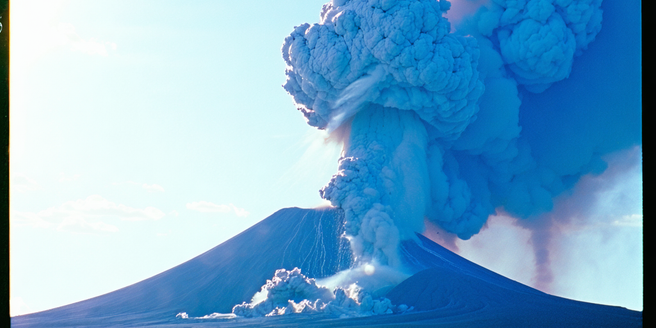
Overview of Volcanic Eruptions and Their Impact on Climate
Volcanic eruptions are natural events with significant implications for the global climate. When a volcano erupts, it releases large quantities of ash and sulphur dioxide into the atmosphere. These substances can reach the stratosphere, forming an aerosol layer that reflects sunlight, leading to surface cooling. The impact of volcanic eruptions on climate is complex and multifaceted, affecting global temperatures and weather patterns. Historical records and scientific studies have documented instances where major eruptions led to noticeably cooler periods, known as volcanic winters. Understanding these impacts is crucial, as it provides insight into the dynamic interactions between Earth’s geological and atmospheric systems, further guiding climate prediction models.
The Science Behind Post-Eruption Cooling Effects
Post-eruption cooling effects, primarily driven by the volcanic aerosols in the atmosphere, result in short-term but significant changes to global climate patterns. When sulphur dioxide is emitted by a volcano, it reacts with water vapor in the atmosphere to form tiny droplets of sulfuric acid. These droplets create a haze that can spread over the globe, persist for several months to years, and reflect solar radiation back into space. This reflection diminishes the amount of solar energy reaching the Earth’s surface, consequently causing temporary cooling. While this cooling might seem beneficial, it disrupts precipitation patterns, potentially causing droughts or floods in different regions, demonstrating the intricate balance within the Earth’s climate system.
Historic Eruptions: Case Studies and Climate Data
Several historic volcanic eruptions provide valuable case studies for examining climate impacts. For instance, the 1815 eruption of Mount Tambora in Indonesia is one of the most significant examples, having caused the “Year Without a Summer” in 1816. This eruption led to widespread crop failures and food shortages in the Northern Hemisphere. Similarly, the eruption of Krakatoa in 1883 resulted in a global cooling effect, visible in anomalies in ice core and tree ring data that researchers study to reconstruct past climates. By examining these historic events, scientists gain insights into the scale and nature of volcanic influences on climate, helping refine predictive climate models.
Modern Climate Monitoring Techniques and Their Findings
Modern climate monitoring techniques offer a deeper understanding of volcanic impacts on climate. Advances in satellite remote sensing allow for precise tracking of volcanic ash and gas emissions across the globe. Additionally, ground-based lidar systems measure atmospheric particles and aerosols, while climate models simulate the dispersion and radiative effects of volcanic aerosols. These technologies have revealed that even moderate eruptions can have global climatic effects if they inject material into the stratosphere. The synthesis of these data sources enhances scientists’ ability to predict climate responses to future eruptions, revealing the critical role of technology in studying Earth’s climate systems.
Challenges in Interpreting Climate Records Post-Eruption
Interpreting climate records post-eruption poses several challenges, primarily due to data variability and the complexity of volcanic impacts. Differentiating between climate changes caused by volcanic activity and those resulting from other factors, such as anthropogenic climate change, requires careful analysis. One of the crucial steps in this process involves distinguishing the temporal overlap of natural and anthropogenic effects. Noise in data from natural variability often obscures subtle signals associated with volcanic impacts. Moreover, records like ice cores or ocean sediments provide indirect evidence of past climates, necessitating intricate calibration with known events. These challenges highlight the importance of multi-disciplinary approaches, combining geochemistry, climatology, and statistical methods for accurate data interpretation.
Future Research Directions in Volcanic Climate Impact
Future research directions in volcanic climate impact emphasize improving predictive capabilities and understanding long-term effects. Increasing the resolution and accuracy of climate models will refine projections of volcanic cooling impacts. Moreover, efforts to understand biogeochemical cycles’ responses to ash deposition will shed light on ecosystem resilience. It is crucial to explore the socioeconomic impacts of volcanic events to better prepare communities for potential disruptions. Collaborative, international projects aim to build comprehensive databases of volcanic activity and climatic responses. These initiatives, coupled with technological advancements in monitoring and computation, strive to deepen insights into volcanic roles in climate dynamics, ultimately aiding policy decisions related to natural disaster preparedness and climate change mitigation.
